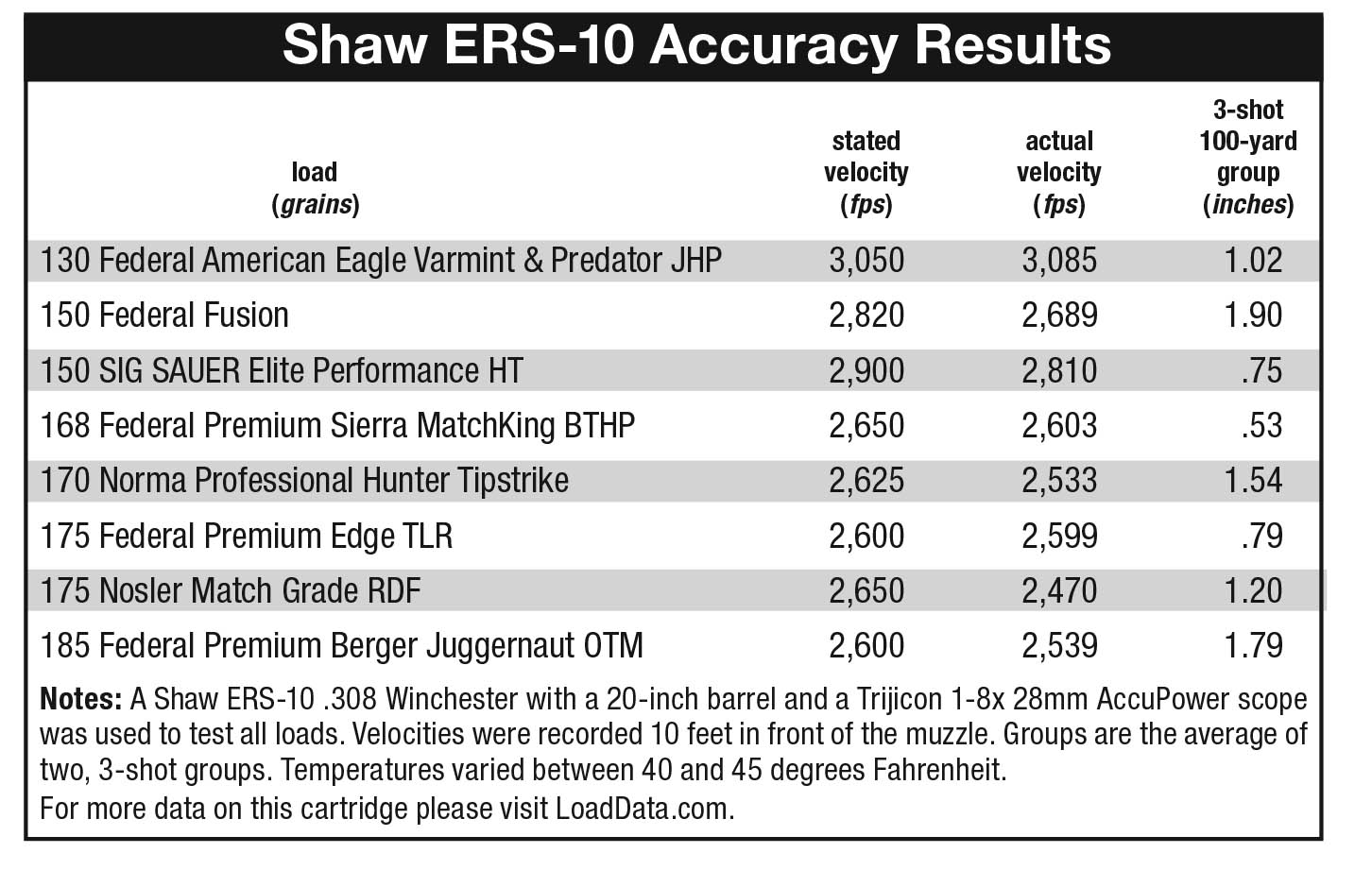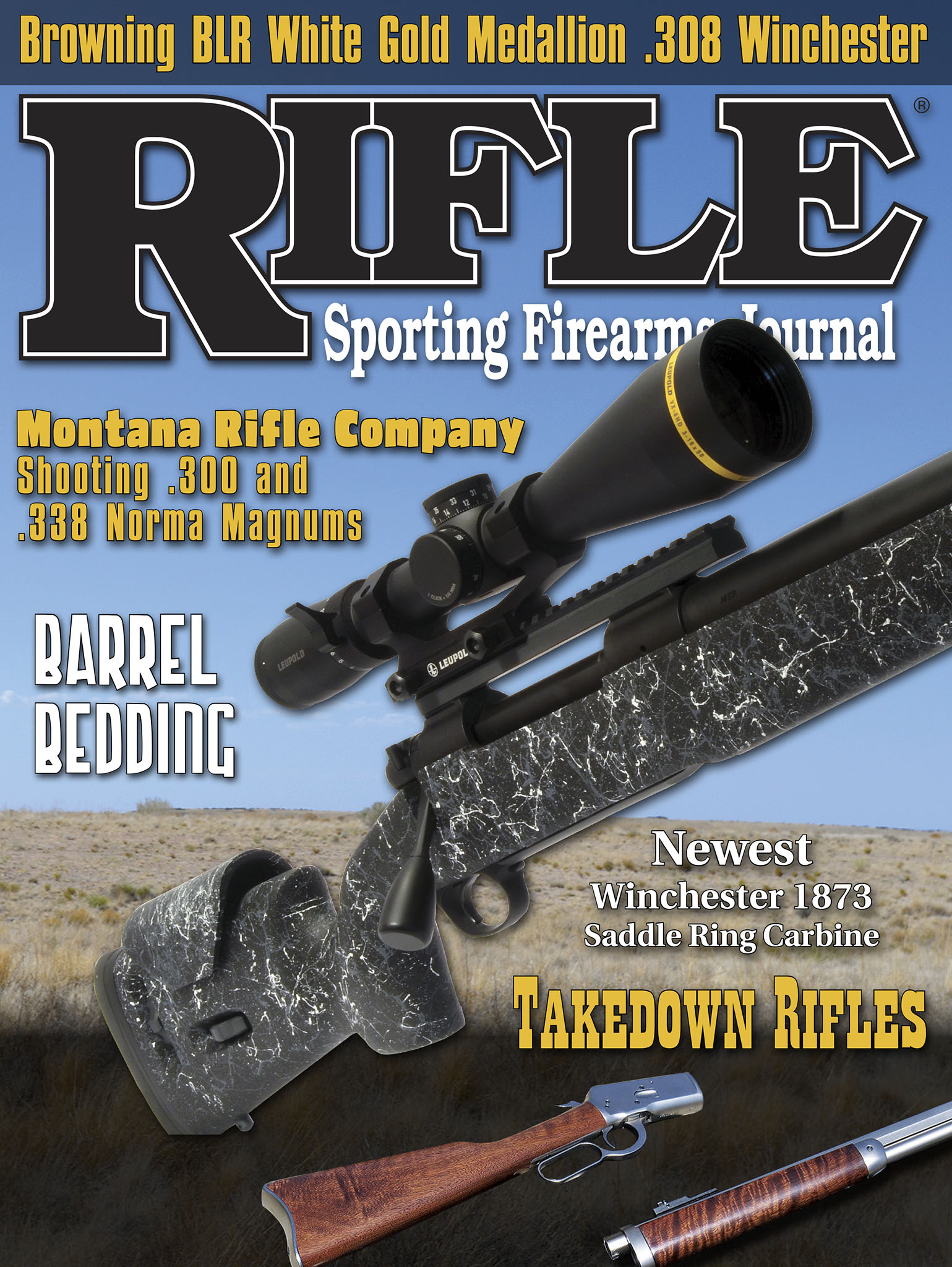Shaw Rifles' ERS-10
Range Testing a New .308 Winchester
feature By: John Haviland | September, 18
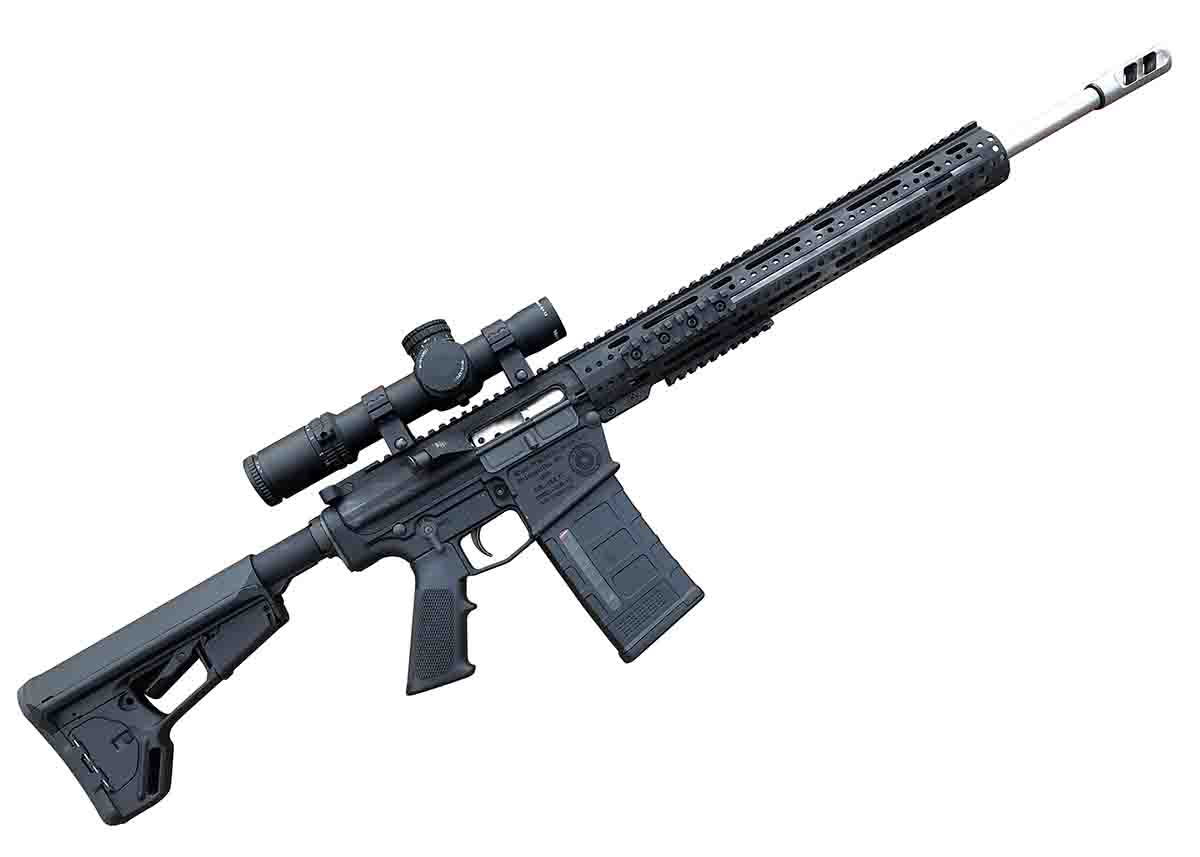
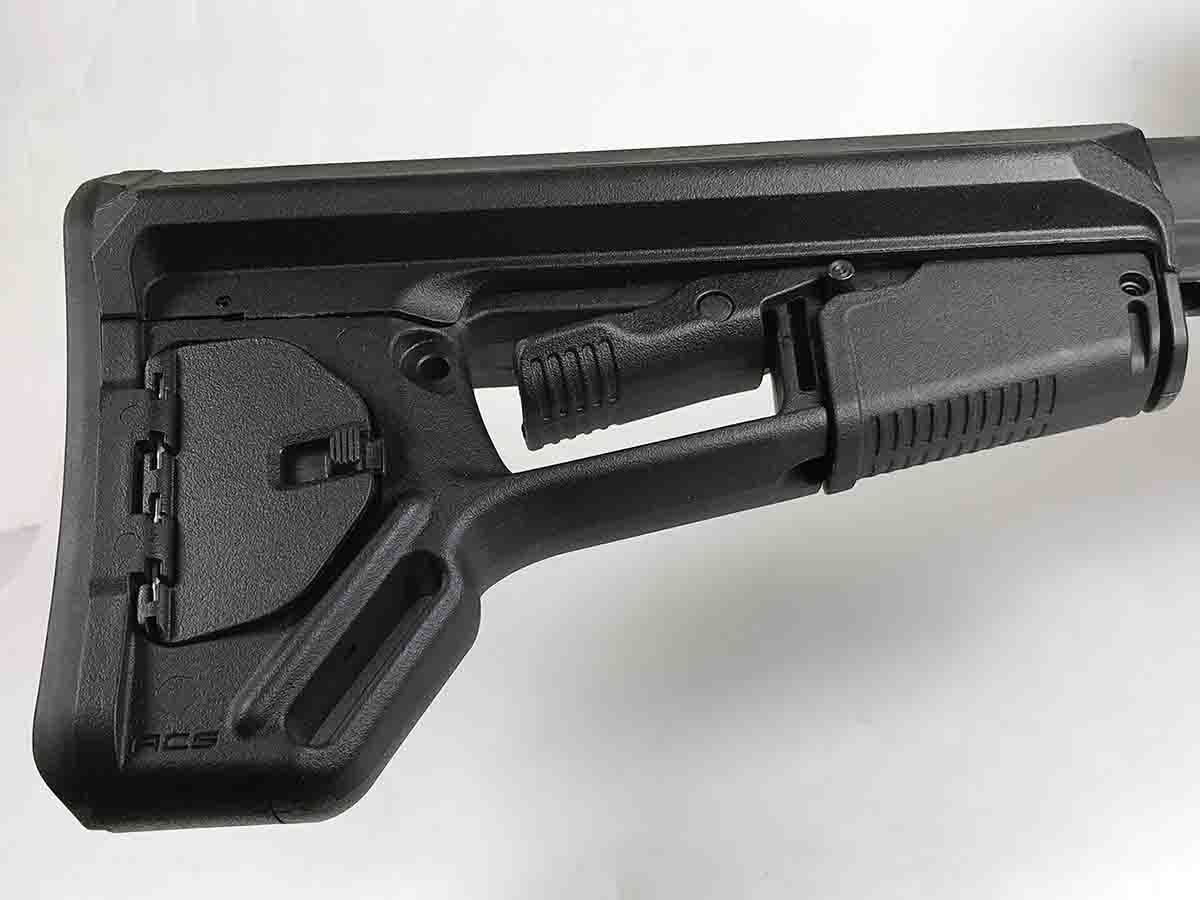
Shaw started manufacturing its AR-type ERS-15 rifles about two years ago. The rifle was well received by shooters, which encouraged Shaw in the last year to start making its ERS-10 rifle to handle the larger 6.5 Creedmoor and .308 Winchester cartridges.
The ERS-10 has a base price of $995. Few other brands of AR-10 rifles sell for that low price. “No other rifle beats the performance of our rifle for the price,” said Carl Behling Jr., president of Shaw. Behling attributes that performance to the button-rifled barrels on the rifles. A look with the aid of a Lyman Digital Borescope into the bore of the ERS-10 .308 Winchester I have been shooting showed the rifling lands were fairly well covered with copper fouling after shooting about 150 rounds. But I looked past that and saw a symmetrical cut of the leade from the chamber to the rifling lands. The metal grain flowed parallel with the bore with precise edges of the lands to the grooves. An overnight soak with Gunslick Foaming Bore Cleaner dissolved the fouling.
Shaw rifle customers who like the Mk. X and Mk. VII bolt actions and ERS-15s can select accessories for their rifles through the Gun Builders page on Shaw’s website (shawcustombarrels.com). For now, options are more limited for the ERS-10 rifle. Over the phone, customers can select a 16.5- to 24-inch barrel made of 416R stainless steel with no flutes, straight flutes or Shaw’s patented Helical flutes. Several colors of CERAKOTE ceramic metal coating are also available. The rifle is currently chambered in 6.5 Creedmoor and .308 Winchester. Behling said the Creedmoor is very popular and the most requested cartridge at Shaw’s custom shop. “The 6.5 is a good cartridge,” he said, “but I’m kind of tired of hearing about it.” Shaw has several other cartridges planned for the ERS-10.
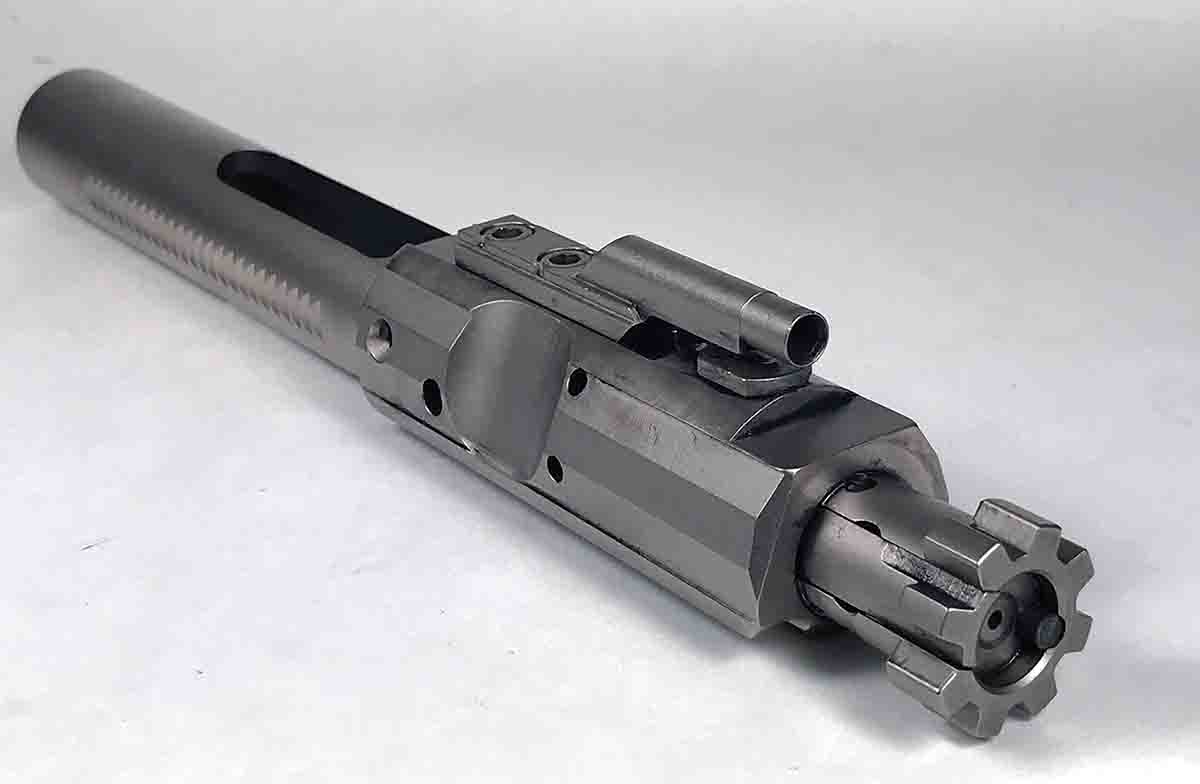
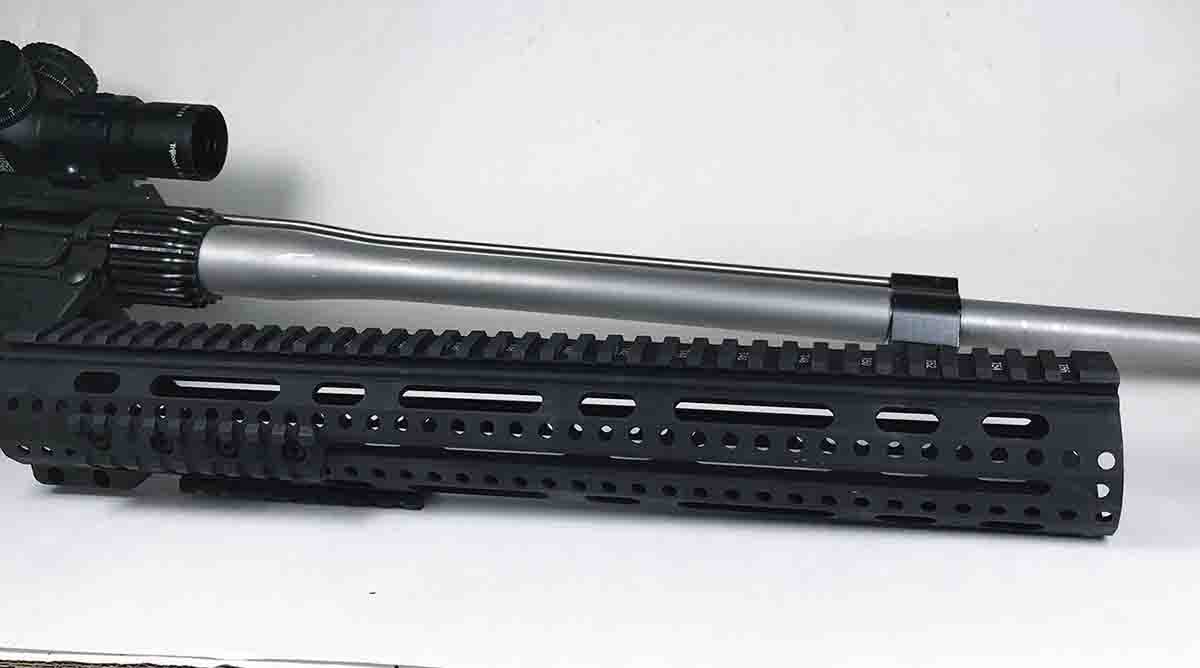
The rifle’s upper and lower are machined from 7075-T6 aluminum forgings coated with a matte black anodized finish resistant to corrosion and wear. One feature I immediately noticed was that the case deflector houses the forward bolt assist button. The mouth of the magazine well is flared to help line up and insert a supplied Magpul PMAG 25 magazine. A safety switch extends out both sides of the lower.
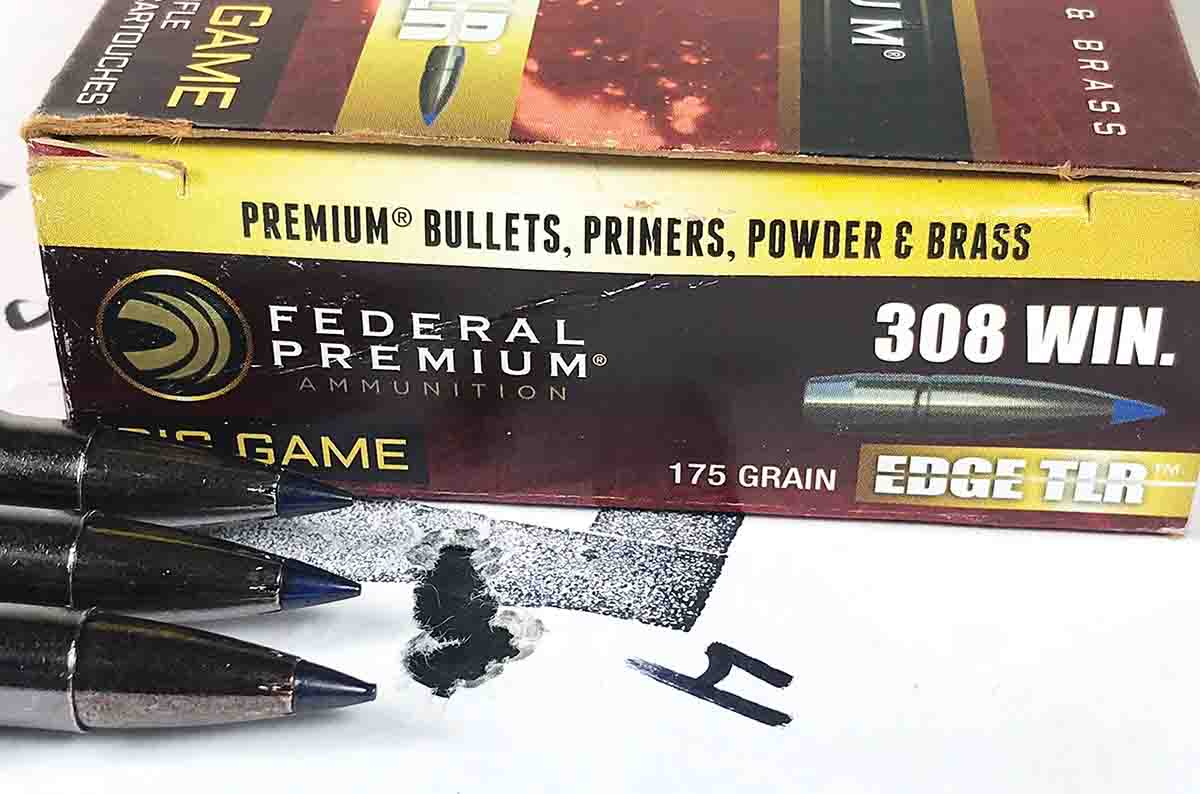
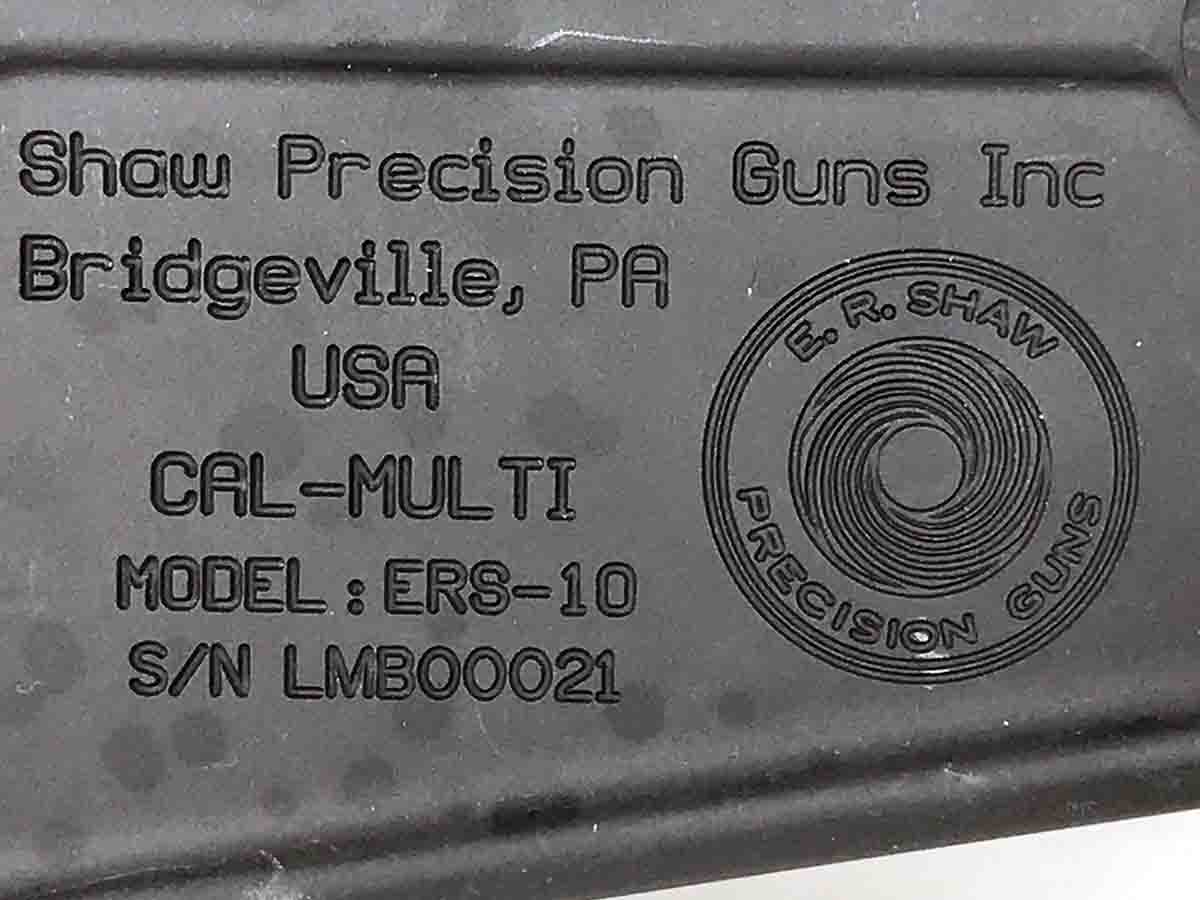
The bolt and bolt carrier are machined from 9310 alloy steel and are nickel-boron coated. The coating is smooth and slippery to resist wear. Most of the powder fouling on the bolt carrier wiped off with a dry rag. The carrier key is a separate piece and locks into place on the bolt carrier with two screws.
The stainless steel barrel has a No. 3, or light varmint, contour. The muzzle brake is an accessory. Matt Challis, Shaw’s factory manager, designed the brake with some input from Behling. The brake has a solid bottom to keep muzzle blast from creating dirt clouds, and four vent holes on the top reduce muzzle flip. Two vented slots on each side have a forward slant. The brake can be unscrewed and the barrel left plain, or a suppressor can be threaded on in the brake’s place.
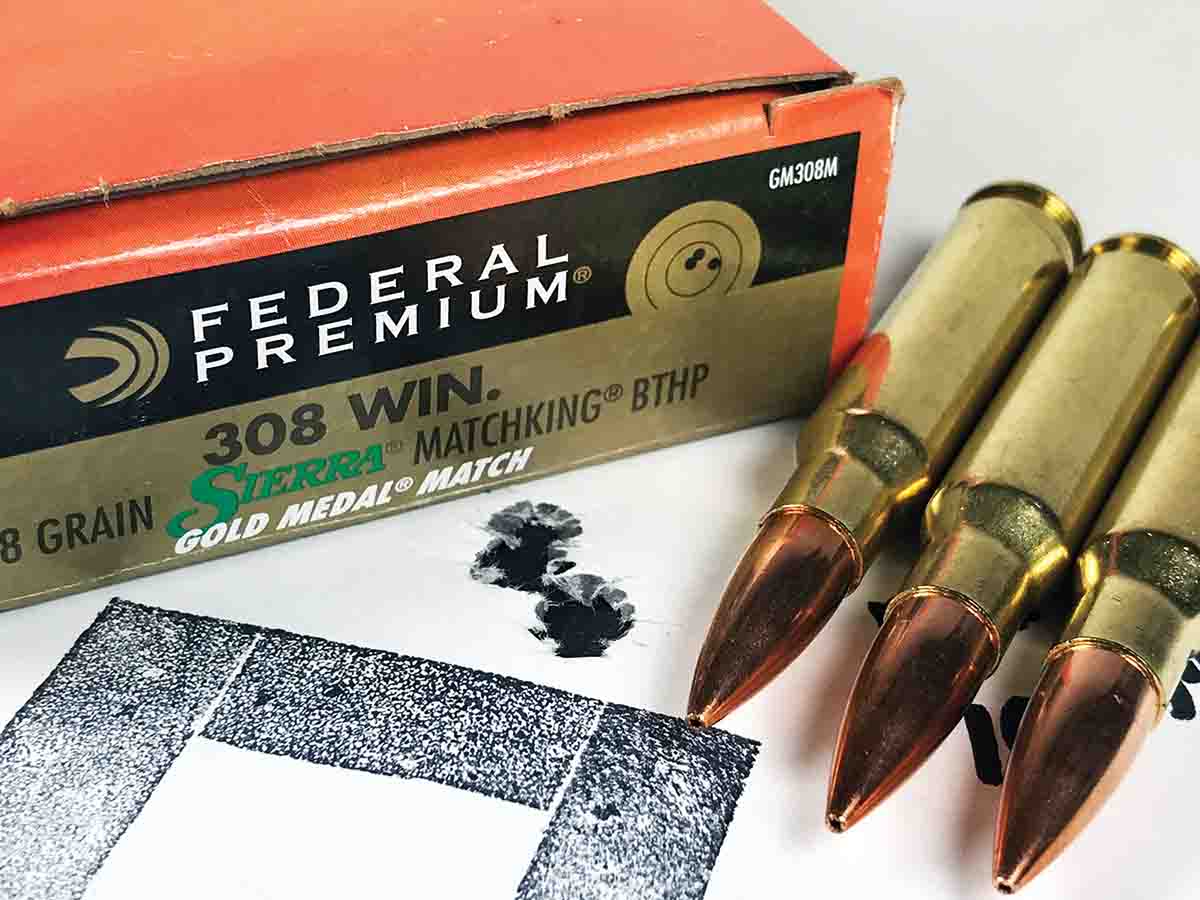
The rifle’s trigger pull was off the scale of my trigger pull gauge. I guess it was about six pounds, and with some creep. That’s about standard for an AR.

The 25-round magazine extends about 5 inches below the bottom of the magazine well. The rifle had to be positioned high on a rest for the magazine to clear the bench. The wide comb of the Magpul ACS-L stock provided a tight fit of my cheek to the rifle and dampened the wobbles of the rifle on its high perch.
The rifle provided several tight groups at 100 yards. For instance, Federal Premium .308 Winchester cartridges loaded with Sierra 168-grain MatchKing bullets averaged .53 inch for two, three-shot groups. SIG SAUER Elite Performance 150-grain HT loads averaged .75 inch, and Federal Premium 175-grain Edge TLR loads grouped .79 inch.
Behling said the rifle does not carry an accuracy guarantee. “There are just too many variables,” he said. “Often it’s the person behind the gun.”
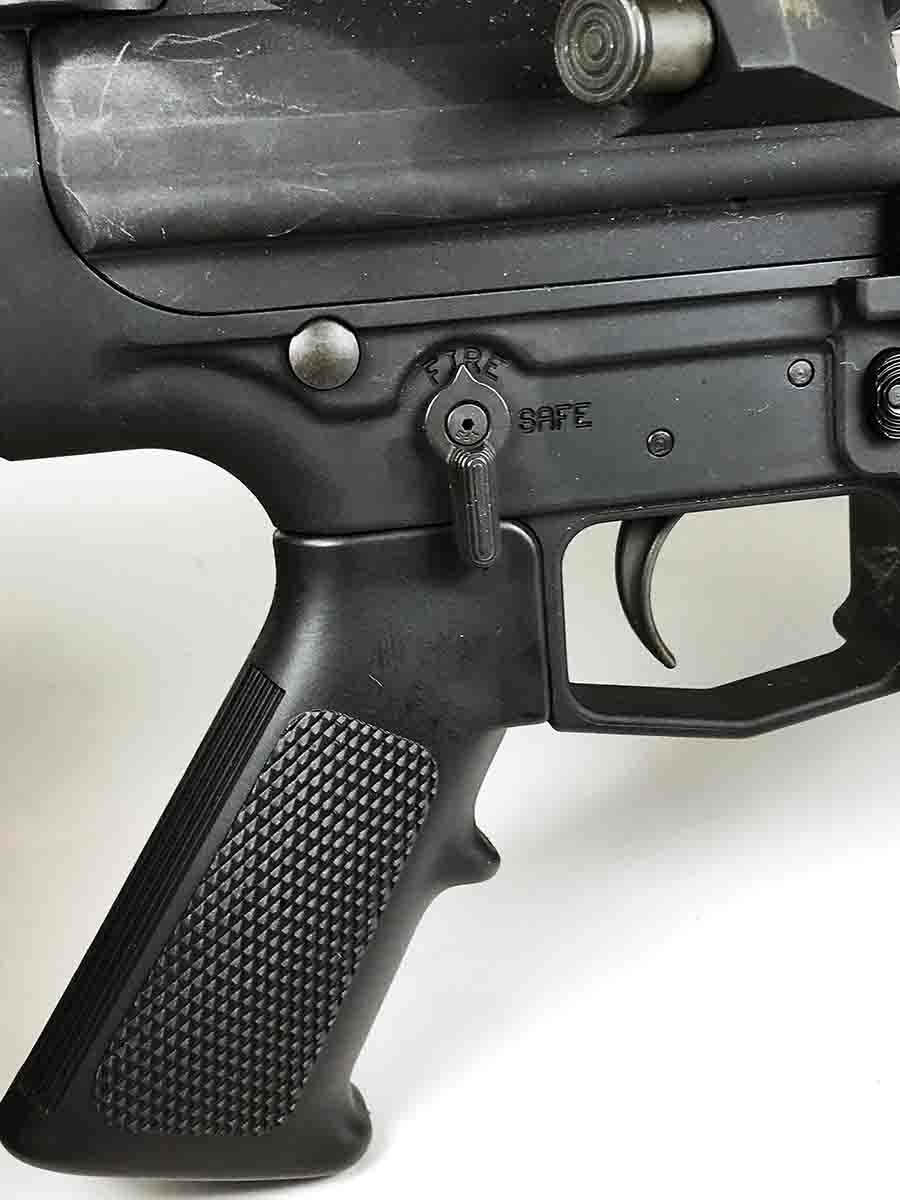
The practice loads fired Berger bullets only about 2,650 fps. To compensate for bullet drop, I aimed 1.5 milliradians (MIL) above the center of steel plates at 300 yards with the Trijicon scope’s reticle. Recoil was so light, I had the scope back on target when the bullets hit the plates and saw the bullets splatter against them. Strangely, the rifle ejected fired cases from some loads to the side and forward, and ejected cases from others loads straight to the side and some to the side and back.
The report from the rifle’s 20-inch barrel was comparatively pleasant. The rifle was plenty loud with its muzzle brake, even when wearing earplugs and muffs, but nothing compared to an AR .308 with a 16-inch barrel that produced muzzle blast like a pile driver pounding in a steel girder. The 20-inch barrel also produced quite a bit more velocity than a .308 with a 16-inch barrel. For example, Federal American Eagle Varmint & Predator 130-grain JHP loads gained 160 fps when shot through the 20-inch barrel compared to the same load fired through an AR-10 with a 16-inch barrel. Federal Premium Sierra 168-grain MatchKing ammunition gained 111 fps, and Federal Premium Berger 185-grain Juggernaut OTM loads gained 139 fps. The 20-inch barrel also fired bullets close to advertised velocities. For instance, Sierra 168-grain MatchKing bullets registered only 47 fps short of Federal’s stated velocity, and Federal Premium 175-grain Edge TLR ammunition chronographed 1 fps slower than Federal’s stated velocities.
On the balance, the ERS-10 receives high grades, especially for a retail price of $995 for a basic rifle. Additionally, the ERS-10 carries the same limited lifetime warranty that covers all Shaw rifles. All together I fired about 200 rounds through the test sample. It cycled each cartridge without a hitch.
